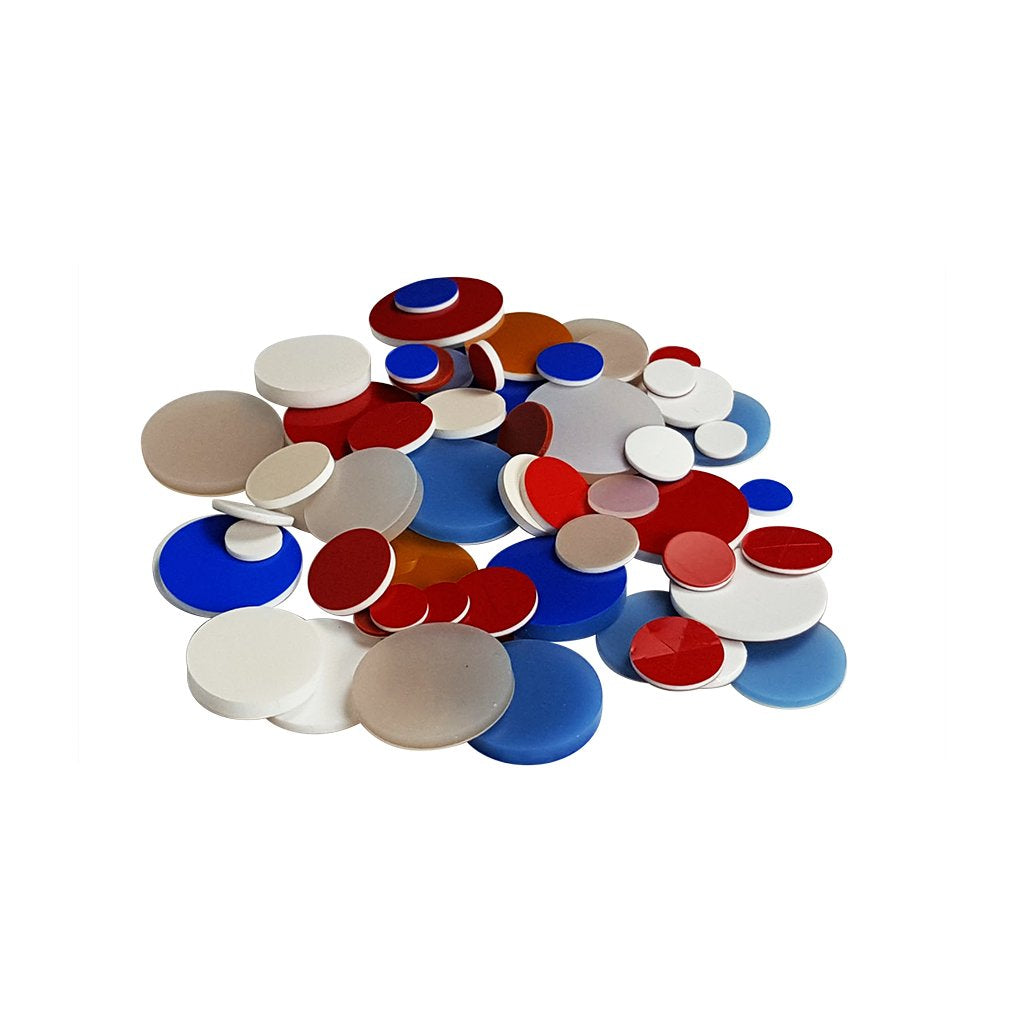
Septa (cap liners)
Image is representative (may not be specific item).
Septa, caps and liners play a key role in the storage and preparation of samples. They securely seal samples from the external environment while simultaneously allowing injection by sampling needles.
Septa must be chemically compatible with your sample and solvent to ensure they provide an effective seal.
Features and benefits
- Trajan septa undergo conditioning (thermal and chemical) to reduce siloxane bleed. Siloxane bleed can occur during heating, solvent interaction or piercing by the autosampler needle causing the material to become stressed.
- Septa liners are often laminated with a layer of high chemical resistance material such as PTFE or FEP. This provides a protective barrier unless punctured, such as with an autosampler syringe needle. Please contact Trajan to discuss specific compatibility requirements.
- Thicker septa give improved resealability, for methods which involve multiple injections or long running times.
Recommended applications
Septa suitability with chemicals
The table below summarizes the suitability of each septa material with a range of chemicals, this can vary based on factors such as temperature, molecular weight and solvent concentration.
Filter by chemical:
|
|
PTFE |
PTFE/silicone |
PTFE/silicone/PTFE |
Viton |
Silicone |
Silicone/FEP |
Silicone/polyimide |
Butyl |
Foam (PTFE/polyethene foam) |
|---|---|---|---|---|---|---|---|---|---|
|
Acetonitrile |
✓ |
✓ |
✓ |
|
✓ |
✓ |
✓ |
|
✓ |
|
Hydrocarbons |
✓ |
|
✓ |
|
✓ |
✓ |
✓ |
|
✓ |
|
Methanol |
✓ |
✓ |
✓ |
✓ |
|
✓ |
✓ |
✓ |
✓ |
|
Benzene |
✓ |
|
✓ |
✓ |
|
✓ |
✓ |
|
✓ |
|
THF |
✓ |
|
✓ |
|
|
✓ |
✓ |
|
✓ |
|
Toluene |
✓ |
|
✓ |
|
|
✓ |
✓ |
|
✓ |
|
DMF |
✓ |
✓ |
✓ |
|
✓ |
✓ |
✓ |
✓ |
✓ |
|
DMSO |
✓ |
✓ |
✓ |
|
✓ |
✓ |
|
|
✓ |
|
Ether |
✓ |
✓ |
✓ |
|
|
✓ |
✓ |
|
✓ |
|
DCM |
✓ |
|
✓ |
✓ |
|
✓ |
✓ |
|
✓ |
|
Alcohols (ethanol) |
✓ |
✓ |
✓ |
✓ |
✓ |
✓ |
✓ |
✓ |
✓ |
|
Acetic acid |
✓ |
✓ |
✓ |
|
✓ |
✓ |
✓ |
✓ |
✓ |
|
Acetone |
✓ |
✓ |
✓ |
✓ |
|
✓ |
✓ |
✓ |
✓ |
|
Phenol |
✓ |
✓ |
✓ |
|
|
✓ |
✓ |
✓ |
✓ |
|
Cyclohexane |
✓ |
|
✓ |
|
|
✓ |
✓ |
|
✓ |
Septa compatibility with applications
This table provides a summary of the suitability of our septa materials to a variety of applications.
|
|
PTFE |
PTFE/silicone |
PTFE/silicone/PTFE |
Viton |
Silicone |
Silicone/FEP |
Silicone/polyimide |
Butyl |
Natural rubber |
|---|---|---|---|---|---|---|---|---|---|
|
Temperature range |
Up to 260°C |
-40°C to 250°C |
-40°C to 250°C |
-40°C to 260°C |
-40°C to 250°C |
-40°C to 250°C |
-40°C to 300°C |
-50°C to 150°C |
0°C to 90°C |
|
Multiple injections |
No |
Yes |
Yes |
No |
Yes |
Yes |
Yes |
No |
No |
|
Price |
Very economical |
Economical |
Most expensive |
Economical |
Very economical |
Economical |
Expensive |
Economical |
Most economical |
|
Suitable for storage |
No |
Yes |
Yes |
No |
Yes |
Yes |
Yes |
No |
Yes |
|
Best for |
|
|
|
|
|
|
|
|
|
Product specifications
- Septa liner and film materials: Silicone, silicone with PTFE, silicone with polyimide, silicone with FEP, butyl, foam, viton.
- Septa thickness range: 0.25 mm to 4 mm.
- Septa configurations: Non slit, straight slit, star slit, cross slit, Y-cut, step slit, washer.
More
Please refer to the brochure (includes part number lists) for more items.
